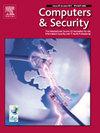ML-based intrusion detection system for precise APT cyber-clustering
IF 4.8
2区 计算机科学
Q1 COMPUTER SCIENCE, INFORMATION SYSTEMS
引用次数: 0
Abstract
As more and more documents are converted from hard copies to digital formats and move to cloud storage, securing data access has become a critical and emergent security concern. Without a doubt, intrusion detection system (IDS) has become the primary defense mechanism for governments and enterprises to identify network attacks. However, the emergence of Advanced Persistent Threat (APT) has brought heightened challenges for an IDS, since malicious hackers can deploy various attacks to penetrate information systems invisibly over extended periods of time. Thus, the authors aim to design a High Discrimination APT Intrusion Detection System (HDAPT-IDS); consisting of Cyber Clustering Module (CCM) and Clustering Analysis Module (CAM). CCM conducts a preliminary classification of traffic packets and utilizes the random forest algorithm to predict the main-class, while CAM selects the applicable Deep Neural Network (DNN) based on the prediction results of CCM to derive the sub-class of traffic packets as the final result. Aside from laying out a high detection rate, HDAPT-IDS can effectively reduce the number of categories during classification to achieve better performance.
基于 ML 的入侵检测系统,用于精确划分 APT 网络集群
随着越来越多的文件从硬拷贝转换为数字格式并转移到云存储,确保数据访问安全已成为一个至关重要的新兴安全问题。毫无疑问,入侵检测系统(IDS)已成为政府和企业识别网络攻击的主要防御机制。然而,高级持续性威胁(APT)的出现给 IDS 带来了更大的挑战,因为恶意黑客可以部署各种攻击,在较长时间内以隐形方式渗透信息系统。因此,作者设计了一种由网络聚类模块(CCM)和聚类分析模块(CAM)组成的高辨别 APT 入侵检测系统(HDAPT-IDS)。CCM 对流量包进行初步分类,利用随机森林算法预测主类;CAM 则根据 CCM 的预测结果选择适用的深度神经网络(DNN),得出流量包的子类作为最终结果。HDAPT-IDS 除了具有较高的检测率外,还能有效减少分类过程中的类别数量,从而获得更好的性能。
本文章由计算机程序翻译,如有差异,请以英文原文为准。
求助全文
约1分钟内获得全文
求助全文
来源期刊

Computers & Security
工程技术-计算机:信息系统
CiteScore
12.40
自引率
7.10%
发文量
365
审稿时长
10.7 months
期刊介绍:
Computers & Security is the most respected technical journal in the IT security field. With its high-profile editorial board and informative regular features and columns, the journal is essential reading for IT security professionals around the world.
Computers & Security provides you with a unique blend of leading edge research and sound practical management advice. It is aimed at the professional involved with computer security, audit, control and data integrity in all sectors - industry, commerce and academia. Recognized worldwide as THE primary source of reference for applied research and technical expertise it is your first step to fully secure systems.
 求助内容:
求助内容: 应助结果提醒方式:
应助结果提醒方式:


